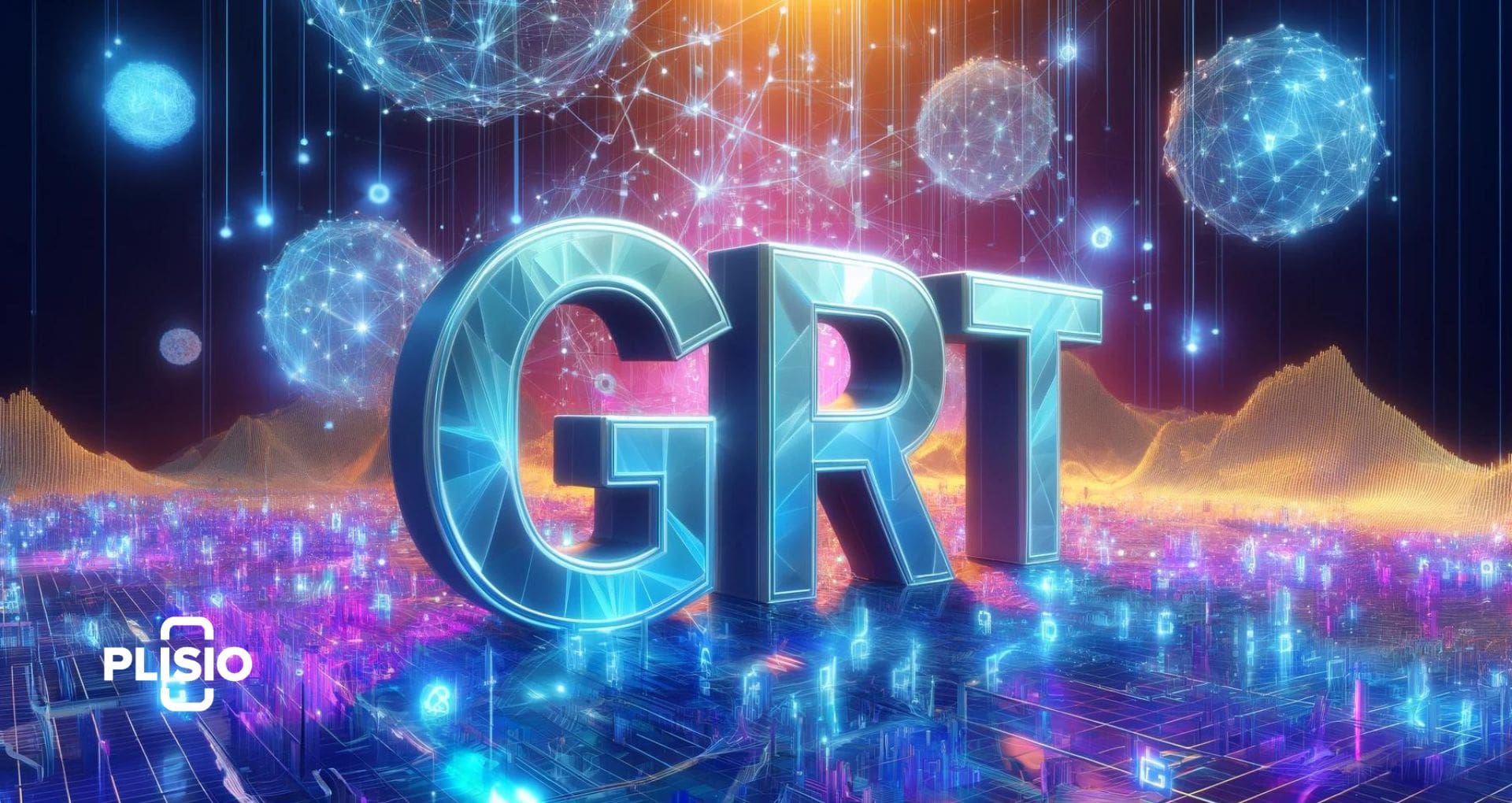What is The Graph? GRT Crypto Explained

Since Bitcoin’s inception, the cryptocurrency market has evolved into a lucrative sector with diverse utilities and numerous blockchain projects and crypto assets. One of the newer additions to this market is The Graph, a unique crypto asset founded in 2018 by Yaniv Tal, Brandon Ramirez, and Jannis Pohlmann.
The Graph (GRT) is an open-source, decentralized indexing protocol for blockchain data. It is designed to facilitate querying on the Ethereum network. The Graph network also allows developers to create various APIs, known as subgraphs, for specific queries. This protocol addresses issues like query security, property finality, chain reorganization, and more, all through the use of subgraphs.
Interested in The Graph (GRT) but unsure what it’s all about or where to start? Don’t worry. This guide will teach you everything you need to know about the project and prepare you to dive into the most user-friendly trading experience available on the market.
What Is The Graph (GRT)?
The Graph is an open-source protocol based on Distributed Ledger Technology (DLT), designed to collect, process, and store data from various blockchain applications, facilitating information retrieval without involving third parties. Originally launched on the Ethereum blockchain, The Graph’s mission is to help developers use relevant data to increase the efficiency of their decentralized applications (dapps).
The protocol works by analyzing and gathering blockchain data and storing it into various indices called subgraphs. This allows any application to send a query to its protocol and receive an immediate response. Queries are posed by dapps through GraphQL, a widely used language originally created by Facebook to gather data for a user's news feed.
The Graph’s network relies on a decentralized ecosystem of service providers, including indexers, curators, and delegators, who help process and pass on the data to end-users and applications. These participants must stake The Graph’s native cryptocurrency, GRT, to perform their roles and, in return, earn fees from the network. GRT is used to ensure the integrity of the data secured within the network.
With the launch of The Graph mainnet, the team paved the way for complete decentralization of applications. Open and public APIs, called subgraphs, enable thousands of dApps to operate on the network, with The Graph mainnet already hosting hundreds. The Graph is currently being used by popular Ethereum dapps like Aave, Curve, and Uniswap.
The Graph has successfully raised significant funding through both public and private sales, including $12 million from their public token sale and $5 million from a private sale funded by notable investors such as Coinbase Ventures, Digital Currency Group, and Framework Ventures. Multicoin Capital also invested $2.5 million in The Graph.
How Does The Graph Work?
The Graph protocol is integral to the evolving decentralized finance (DeFi) space and the broader crypto economy. It enables developers and network participants to use public and open APIs to build subgraphs for various decentralized applications (dApps), facilitating querying, indexing, and data collection. In April 2021 alone, The Graph’s hosted service processed 20 billion queries.
The process begins with Graph Nodes, which continuously scan network blocks and smart contracts for information. When an application adds data to the blockchain via smart contracts, the Graph Node incorporates this data into the appropriate subgraphs.
Once the Graph Node extracts the necessary information, three types of users contribute to organizing the data within the protocol:
- Curators: These are subgraph developers who determine which subgraphs are of high quality and should be indexed by The Graph. Curators signal their approval by attaching GRT tokens to the subgraphs they support.
- Indexers: Node operators who provide indexing and querying services for the signaled subgraphs. They must stake GRT tokens to perform these services.
- Delegators: These users delegate their GRT tokens to indexers to support the network without needing to run a node themselves.
All participants earn a portion of the network fees based on their roles. This incentivizes them to maintain and improve the quality and accuracy of the data provided.
Applications can easily access this organized data to enhance their functionality through queries. For instance, Decentraland uses The Graph to find land, accessories, and collectibles across various applications and integrate them into its marketplace, allowing users to purchase these items from a central location.
The network creates a decentralized market for queries, where consumers can pay in GRT tokens to use the services available. By indexing data, developers can define how data should be used by dApps. The Graph supports Ethereum, IPFS, and PoA networks via GraphQL, with plans to expand to more networks in the future.
What Makes The Graph (GRT) Unique?
The Graph network stands out as a pioneering blockchain project, being the first decentralized market for querying and indexing data for decentralized applications (dApps). This innovative approach grants The Graph a distinctive utility within the blockchain and cryptocurrency sectors, which is often reflected in the value and interest surrounding The Graph’s native token, GRT.
The uniqueness of The Graph lies in its mission to provide easily accessible and organized data for consumers on its network. The protocol is maintained by a robust community of network participants, including Indexers, who serve as node operators. These Indexers create a unique market for indexing and querying data from various blockchain sources, such as Ethereum, making data retrieval seamless and efficient.
The Graph’s decentralized marketplace effectively addresses the challenges associated with developing dApps, particularly in resolving indexing issues and proprietary concerns. By enabling open and public APIs, known as subgraphs, The Graph allows developers to build and query data without reliance on centralized entities, ensuring data integrity and accessibility.
Additionally, The Graph’s commitment to decentralization is evident in its incentive structure. Curators, Indexers, and Delegators all play crucial roles in maintaining the network’s functionality and reliability. These participants stake GRT tokens to perform their tasks, ensuring a high level of engagement and accountability within the ecosystem.
The Graph’s protocol is already being utilized by popular Ethereum-based dApps such as Aave, Curve, and Uniswap, demonstrating its practical value and widespread adoption. Furthermore, with the launch of its mainnet, The Graph has paved the way for complete decentralization of applications, making it a vital infrastructure component for the future of blockchain technology.
Why does GRT have value?
The GRT cryptocurrency holds value primarily due to its critical role in ensuring the successful execution of smart contracts that depend on The Graph protocol. GRT is the sole cryptocurrency used for essential network operations. For instance, consumers who submit queries to indexers must pay a query fee denominated in GRT.
Several factors contribute to the intrinsic and market value of GRT:
- Network Utility: GRT is integral to the functioning of The Graph’s decentralized network. Curators earn query fees for the subgraphs they signal, indexers receive a portion of the query fees and protocol rewards, and delegators earn a share of the indexer fees for staking their GRT. This network utility creates a continuous demand for GRT tokens.
- Governance: GRT token holders can participate in governance decisions affecting The Graph's software, voting on proposals that determine the rules governing the platform's use. Delegators can assign their voting rights to representatives who vote on their behalf, ensuring a democratic decision-making process.
- Market Dynamics: The Graph has both technical and market value, with GRT tokens actively traded in the cryptocurrency market. Factors such as total supply, circulating supply, project roadmap, technical features, mainstream use, regulations, adoption, updates, and upgrades all influence the market value of GRT.
- Supply and Issuance: The Graph launched with an initial total supply of 10 billion GRT in 2020. The annual issuance rate of new GRT tokens started at 3% and is subject to future technical governance adjustments. Additionally, The Graph burns a portion of the tokens, including the withdrawal tax charged to curators and 1% of total protocol query fees. This dynamic affects whether GRT will be an inflationary or deflationary asset in the future, depending on the volume of queries processed.
- Adoption and Mainnet Launch: The value of The Graph increased significantly with the launch of its mainnet in 2020. This milestone marked a major step towards the project's goal of achieving complete decentralization of dApps, acting as a gateway to Web 3. The widespread adoption of The Graph by popular Ethereum dApps like Aave, Curve, and Uniswap further underscores its practical utility and value.

